Peonies "Dinner plate": description, features of planting and care
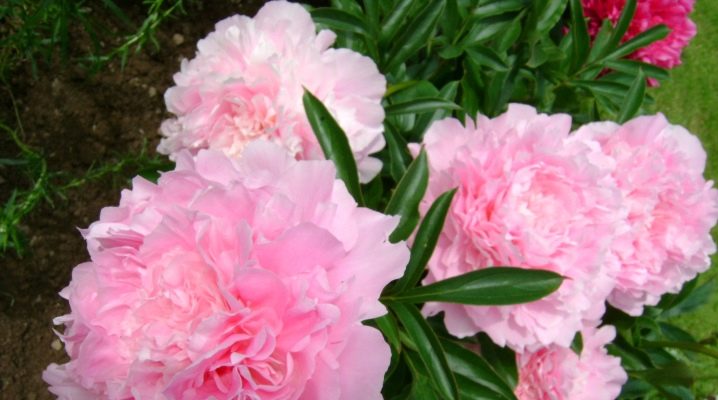
When fragrant peonies bloom in gardens and parks, we can say that the real summer has begun. It seems that there is no such garden area or city park where these wonderful flowers would not grow. And it is very difficult to make a choice among the splendor of various varieties. Peony "Dinner Plate" - one of the most beautiful varieties of herbaceous species of this plant.
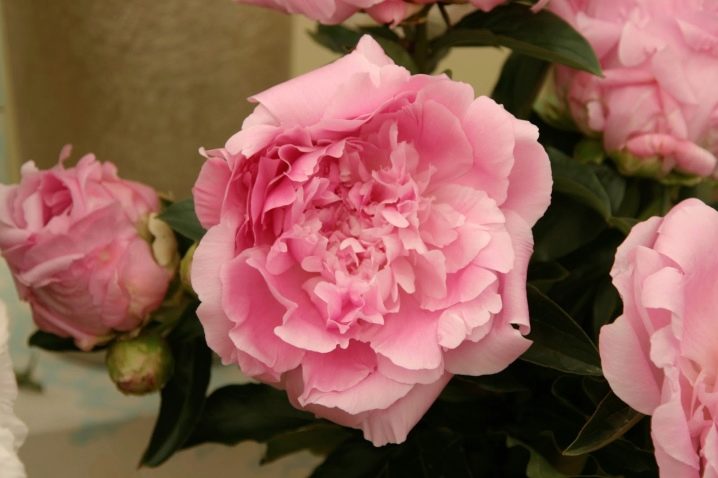
Description
Peony "Dinner Plate" was bred in 1968 in the nursery of Charles Klemm (USA, Illinois). And already in 1973 at the American Exhibition he received a prize: the "Grand Champion" award. This award is well deserved, since the flower is really beautiful: huge double soft pink flowers densely cover a small bush, and so that it does not fall apart from the weight of the buds, you have to tie up and strengthen not very powerful stems. The name translates to "dinner plate" and speaks of the size of these gorgeous flowers.
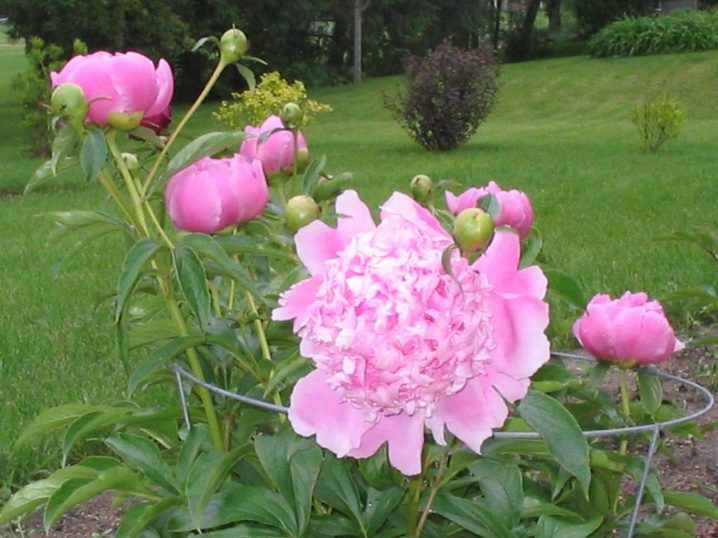
Dinner Plate refers to the milky-flowered species of herbaceous peonies. The variety has an average flowering period, does not lose its beautiful appearance and pleasant thick aroma for a long time. And also, which is important for our territory, the peony is winter-hardy, which does not require special care. This variety is very good for cutting, as it blooms for a long time and abundantly, and at the same time, the petals are resistant to wilting and do not lose freshness for a long time. This perennial plant looks good both in group plantings and alone.
On the green grass of the lawn, a bush densely covered with large pink flowers will be a wonderful decoration of the garden.
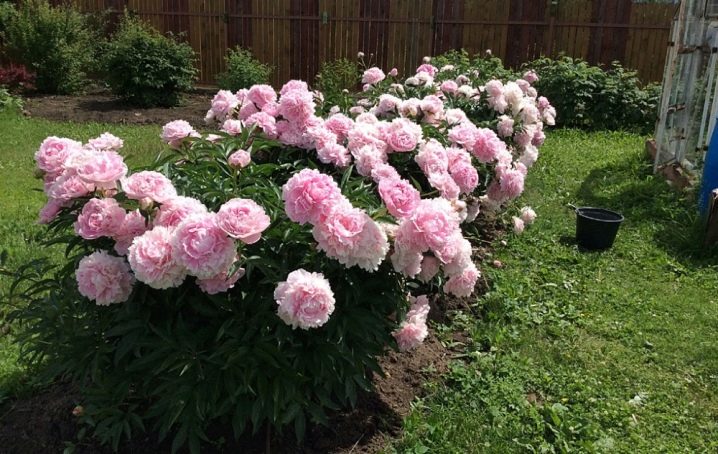
Landing features
Peony is a rather unpretentious plant, but still, so that the bush develops well and blooms annually, some rules are required when planting and further caring for it.
- You need to choose the right place for planting, since a peony can grow in one place for a very long time: even up to 50 years... Therefore, it should be a fairly sunlit place, and it is desirable that the sun is present in the first half of the day. Light partial shade is allowed. In the shade, the bush will develop poorly and will never bloom. It is also undesirable to plant peonies in the lowlands, as this can cause root rot.
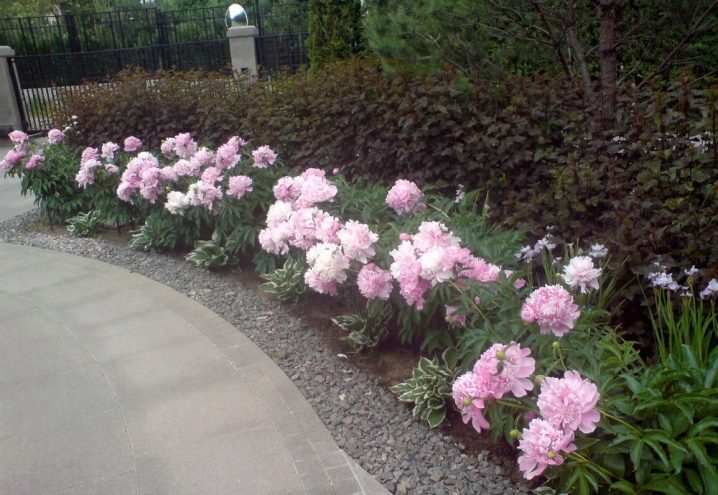
- There are some requirements for the soil. Peonies grow well in loamy soil with slightly increased acidity (~ 6.6 pH). But the soil should not be too dense. Therefore, highly clayey soil must be diluted with sand, humus, peat, ash can be added. And in sandy soil, on the contrary, add clay and humus.
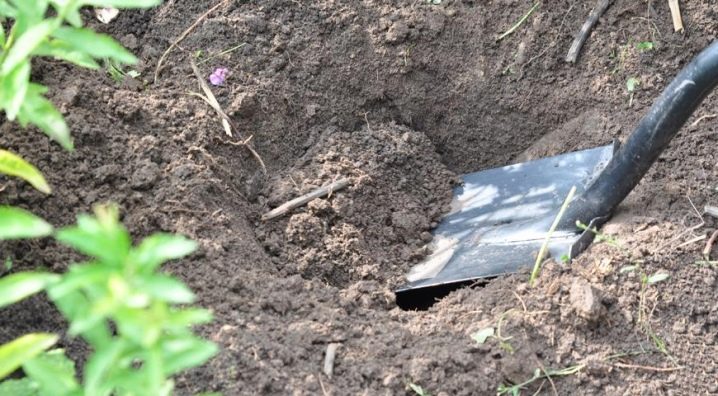
- It is advisable to transplant and plant herbaceous peonies in the fall, in August or in September, when the summer heat subsides, and the air becomes cooler, and the rhizome will have time to adapt and take root before the onset of cold weather.
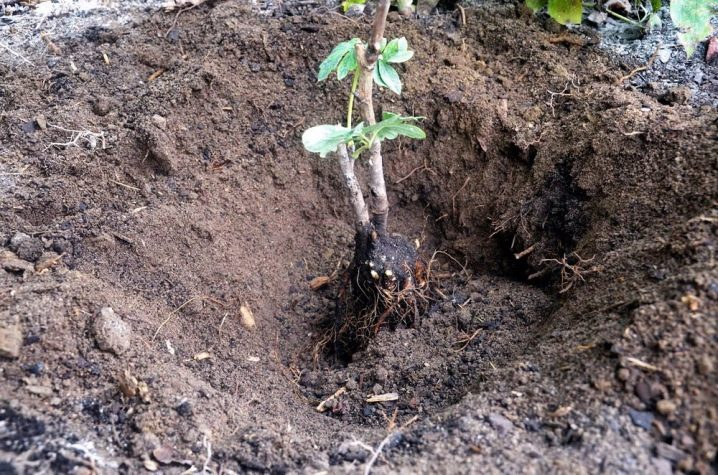
A hole for a peony seedling must be prepared in advance: a week before planting.
- Drainage needs to be poured into the bottom of a pit about 0.6 m 3 in size. This is coarse sand with pebbles, shards, pieces of brick.
- Then you should add a nutrient mixture, including complex fertilizer, humus, lime, ash, and sprinkle with prepared soil on top.
- In a few days, when the ground subsides, you can plant a plant.
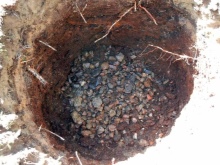
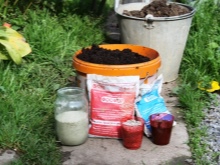
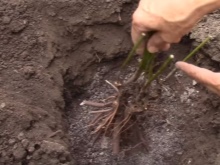
When planting, it is imperative to make sure that the neck of the rhizome remains approximately at ground level or slightly lower, since the soil will settle a little more, and you will still have to fill up the earth. But in no case should the buds be buried, otherwise the peony will not bloom. When planting, the earth must be lightly tamped and watered well.
The peony is unlikely to bloom in the first year after planting, so you should not immediately be disappointed. The plant needs to gain strength and power for flowering. But if the buds do not appear in subsequent years, then a mistake was made during planting, and an adjustment must be made.
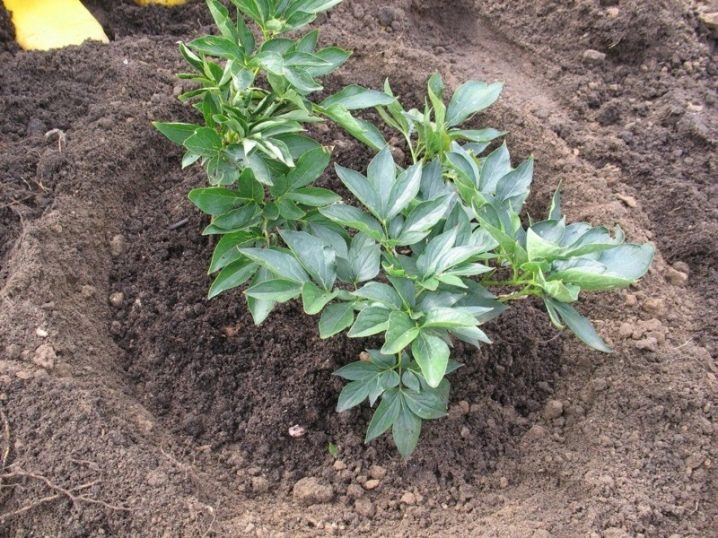
Care
In order for peonies to delight every year with lush flowering, they need relatively simple care. This is correct and timely watering, fertilization and protection from insect pests and diseases. In the spring, under the bushes of peonies, you need to loosen the ground, remove the remnants of weeds and water thoroughly (at least 3 buckets of water for each bush), and for the growth of stems and leaves, fertilize with nitrogen, for example, ammonium nitrate. Further, when the buds begin to appear, it is necessary to feed the plant with potash fertilizers or use ash.

In the summer, care consists in removing weeds, periodically loosening the soil and timely watering. It is better to water less often, but more abundantly. After all the buds have faded, they must be removed, and the plant must be fed with mineral potash, phosphorus or organic fertilizers.

In summer, especially in hot weather, aphids can become active. Since it has the ability to multiply very quickly, you must try to get rid of it as soon as possible. To do this, you can use an infusion of tobacco, a solution of laundry soap for spraying, or purchase chemicals for pest control in specialized stores.
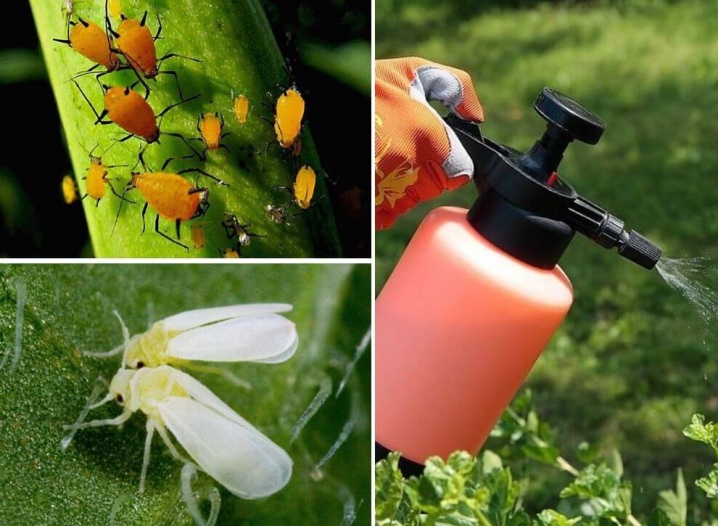
At the end of summer, you need to increase watering, since at this time new buds begin to form. But with the onset of autumn cold weather, watering is stopped, and when the first frosts begin, cut the stems to nearly ground level. Burn all plant residues, treat the cut sites with ash.
This will serve as the prevention of various diseases, as well as destroy all kinds of insect larvae.
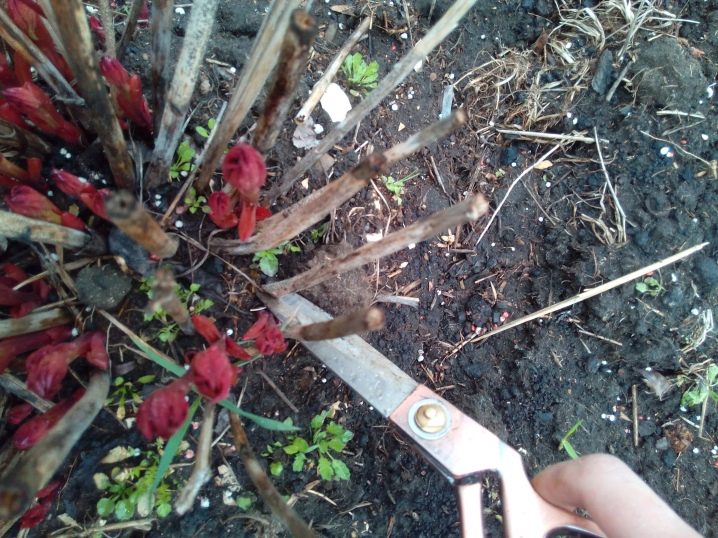
See below for more details.







































































































The comment was sent successfully.